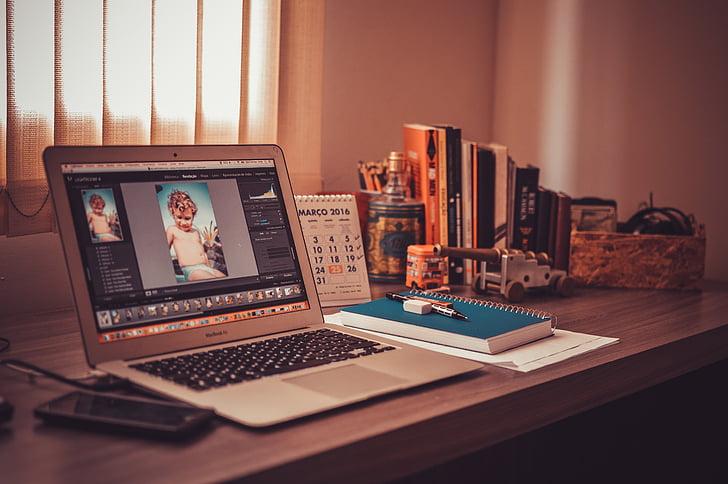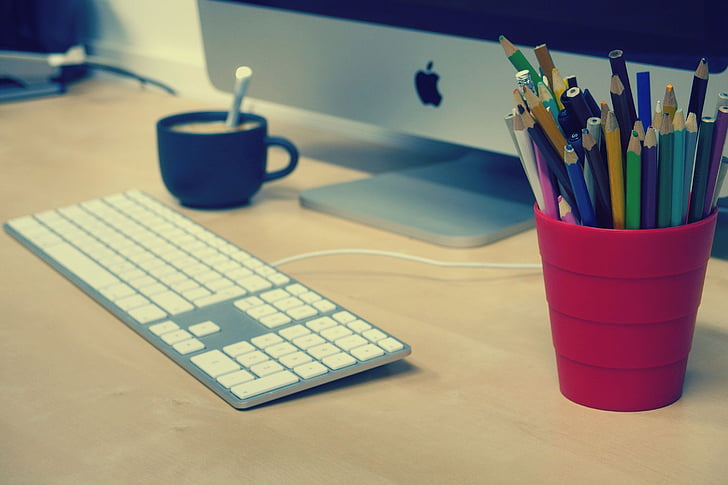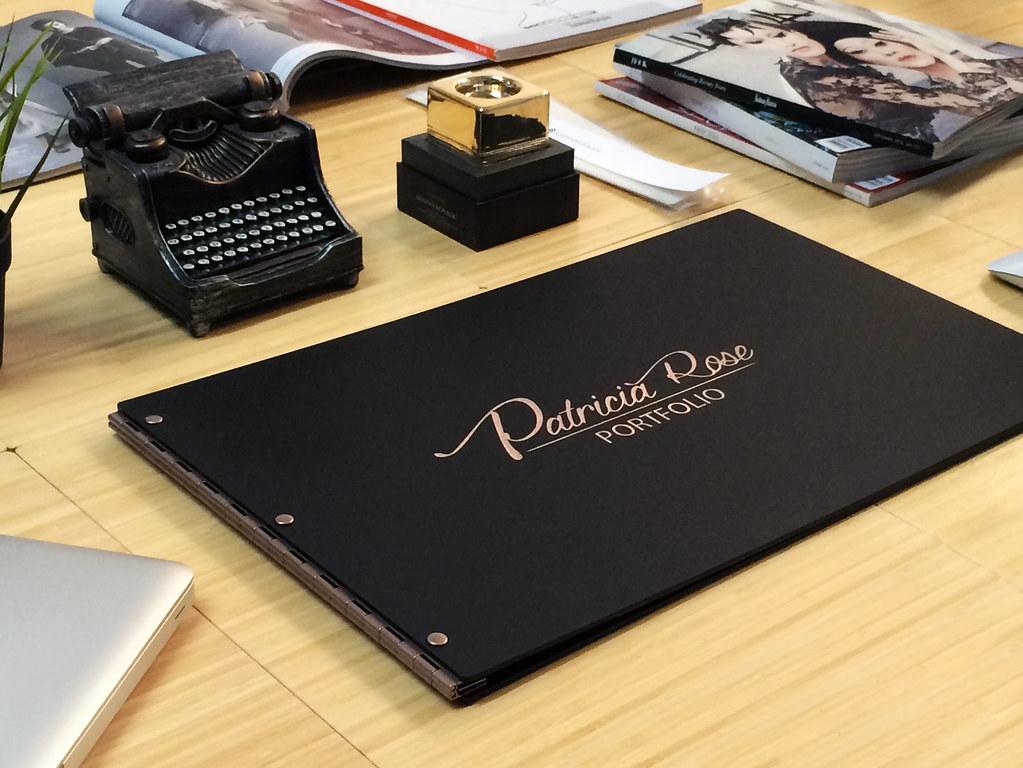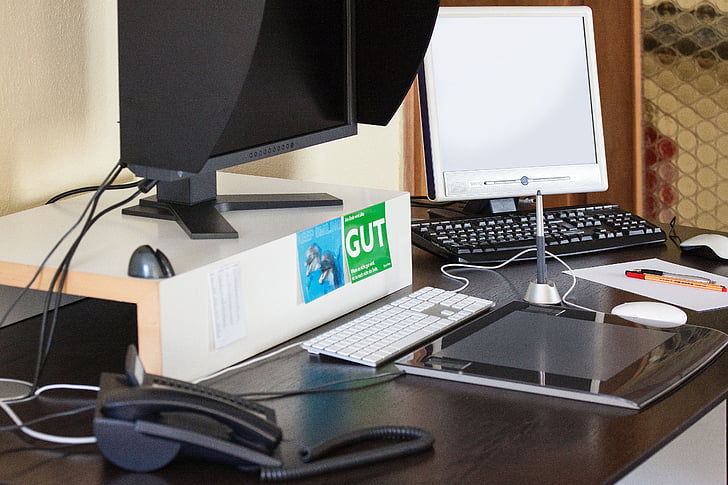Do you often see beautiful book covers and brochures? They can be my products. As a desktop publisher, I’m in charge of creating eye-catching designs.
If you wonder how to become a desktop publisher like me, then you are at the right place! I will share the education options, how much you can earn, and everything about it. So let’s get started!
Who Is A Desktop Publisher?
A desktop publisher uses specialized publishing software to create layouts and designs for content. Their products can be newspapers, magazines, books, etc.
Desktop publishers usually work in the publishing industry, and they can work by themselves or for a company. Their tasks vary depending on the project they are working on.
They are experts in using publishing software to create designs and layouts for content. They often collaborate with graphic designers and illustrators.

What Does A Desktop Publisher Do?
Desktop publishers are busy because they have many daily tasks. I’m working in this position, so I understand how hard it is to handle all of them.
As I have mentioned, my tasks can vary. But generally, my daily duty list includes the following:
- Research: I research images, illustrations, and other visual elements to use in the projects. It sounds fun, but sometimes I spend hours finding the best illustrations. My goal here is to make the project look appealing.
- Content organization: This task involves gathering materials in an organized way. Then, I arrange them with the written content to create a visually pleasing layout.
- Design: A product has many elements. Thus, I have to decide on various things, including the letter font, colors, and patterns. The spacing between those elements must be right, too.
- Collaboration: I work closely with the authors and editors. We have meetings to make sure the design matches the content.
- Text editing: The beautiful design becomes useless when I have grammar mistakes or misspelled words. Hence, I also check for errors in the text.
- Importing: After sketching the design, I put it into a special computer program made for publishing. It helps me create the final version of the product.
- Digital conversion: I can’t just submit my physical art. Instead, I turn it into a digital image that can work on the computer. This process allows my art to be handled in the project easily.
How To Become A Desktop Publisher
Becoming a desktop publisher is a challenging adventure. If you are ready, please follow the steps below.
Step 1: Obtain A Degree
Education is your first step. The level of schooling you need can be different. For example, some get post-secondary certificates after they finish high school.
Meanwhile, others earn a bachelor’s degree. But the most common option for this position is an associate’s degree.
The degree you have can illustrate your ability to some extent. Many employers prefer candidates with a bachelor’s degree.
Next, choose the right major for your future job when you are in school. Since you want to become a desktop publisher, consider the following fields:
- Graphic arts: This major is about creating visual products, like images and drawings.
- Graphic communications: You can learn how to convey ideas through visuals. Then, your products will look good. Everyone can also understand them easily.
- Graphic design: This major focuses on designing. There are many applications and job opportunities for it.

Step 2: Develop Your Skills
Skills are as important as knowledge. To become a good desktop publisher, you need these skills:
Artistic aptitude
You should have a natural talent for art. Those with high artistic aptitude can develop designs that catch every people’s attention easily.
Computer technology
Nowadays, many design tasks are done on computers. Thus, you must be proficient in computer programs to work as a desktop publisher.
For example, you will use tools to edit images and make everything look right on the screen. Then, you can transfer the design to your teammate and clients.
Even when your job is more about physical drawing, you have to convert it into a digital file. So developing your computer skills is a must.
Critical thinking
Critical thinking helps you solve problems. For instance, you should not rush into a solution when you encounter a challenge. Instead, analyze the situation first. Then, break it down into smaller parts and figure out the best way to tackle each part.
Communication
Even when you choose to become a freelancer, you still need to talk to your clients. Thus, communication skills are essential.
Being good at communication means you listen to others’ ideas and express your thoughts. Then, you can work together to create something great.
Attention to detail
This skill refers to how careful you are at work. Since a design has many details, you have to pay attention to even the tiniest ones. It’s the only way to make sure everything is in the right place.
Creativity
Creative people can think outside the box. If you are creative, you can succeed in your role more efficiently.
With creativity, you will come up with new and exciting ideas. Then, your clients will be impressed by your artwork.

Step 3: Build An Appealing Portfolio
You want to let others know that you are good at desktop publishing. The best way is to create a portfolio.
The portfolio is a collection of your coolest projects. They prove you’re excellent at designing. But how to build an appealing portfolio?
First, write a short paragraph about your educational background and skills. Remember to focus on desktop publishing.
For example, the skill section should include the computer programs and techniques you are good at. They can be Photoshop, Adobe, and others.
Then, move to the experience part. Describe the projects you’ve worked on here. You should also mention the results you got.
You can create your portfolio online. Websites like Dribbble and Behance are helpful tools for this task. And if you want, make a PDF version of the portfolio. Then, share with your resume or through email.
Another thing to note when building your portfolio is to keep it updated. It should always grow and look its best.

Step 4: Apply For Internships
An internship allows you to learn and practice what you’ve learned in the real world. You can’t have this hands-on experience at school.
During your internship, you will work with experienced people. So don’t miss any chance to learn from them.
Plus, you can help them with real projects. It’s terrific to use the software you’ve learned to contribute to your company.
I also want to highlight that sometimes you don’t get paid as an intern. Some companies can pay, but your salary is not high. Even so, the most important thing is the experience you’ll gain.
Hence, during this period, be open to learning new things. Don’t be shy to ask questions and take notes. Those notes are the best books you can have.
Besides, be on time and enthusiastic. Once you finish your task, ask if there’s anything else you can help with.
Finally, try to expand your network. Sometimes, your internship can lead to future job opportunities. So, be friendly to everyone.

Step 5: Find A Job In A Related Field
Now you have knowledge, skills, and experience. It’s time to find a job as a desktop publisher. You can check job openings on LinkedIn or Indeed.
Additionally, many companies have a “Careers” section on their websites. Thus, check out the websites of your favorite company. You may become a part of it someday.
Another place to find jobs is job fairs. Many companies gather here to meet potential employees.
The employer will invite you for an interview if they like your portfolio. Here are some quick tips for your first job interview:
- Learn about the company you’re interviewing with. You can check their basic info online.
- Dress nicely to show that you take the interview seriously.
- Being punctual is important.
- Speak confidently during the interview, but don’t forget to be polite.
- Talk about your skills and projects. Also, explain how your experience can help them.
- At the end of the interview, the employer may ask if you have any questions. It’s a chance to show your interest in the company.
- After the interview, send a thank-you email or say it directly to the interviewer.

Step 6: Apply For Promotions
After years of working as a desktop publisher, you’ve gained a lot of experience. So consider moving up in your job.
Promotions are important because they mean better pay and chances for bigger projects. I believe that when you’re really at what you do currently, you want to take on more challenging roles.
However, remember that promotions don’t come automatically. You need to show that you have the necessary skills for a higher position. So stay curious and learn more to climb your career ladder.

Job Outlooks
The average annual salary for desktop publishers was around $54,920 in 2023. Some earned less, about $27,198, while others had a higher salary range of $85,926. So, the exact answer depends on your experience and location!
The number of jobs available for desktop publishers may go down a bit in the future. However, there are still around 900 job openings every year. Thus, you have opportunities, although it may not be as many as before.
Most of those job openings are available because some desktop publishers change their job or retire. So, companies need new people to take their place.
How Much Does It Cost To Become A Desktop Publisher?
Before you can earn money as a desktop publisher, you have to invest in your education. If you plan to get an associate’s degree, it may cost anywhere from $3,800 per year.
On the other hand, you can choose a higher education level. A bachelor’s degree usually costs around $10,000 to $30,000 for a year. It’s costlier than an associate’s degree, but you will have more job opportunities with a bachelor’s.
Moreover, you may want to get some certifications about specific computer programs. Thus, pay for those courses.
But don’t worry too much about money! There are many options for different budgets. Thus, choose the best way to invest in your future.
For example, you can get an associate’s degree instead of a bachelor’s. Some schools are also more affordable than others.
Another solution is to take online courses to learn specific skills. They are often more affordable than traditional classroom courses.
You can also consider self-learning. Many free or trial versions of desktop publishing software are available for your learning path.
Apply for scholarships, too. Schools encourage students with good performance to follow their dream. Some organizations offer scholarships as well.

How Long Does It Take To Become A Desktop Publisher?
It depends on what you choose. For example, if you decide to get an associate’s degree, it will take about two years. Meanwhile, you need four years for a bachelor’s degree.
Even if you don’t have a degree, you still should get some experience. It would be best to look for an internship in your last year of university. The internship often lasts for two to six months.
Do you intend to take some software courses? Each course can teach you specific skills in just a few weeks. But you can also find courses that take a couple of months.
So, the time you need to become a desktop publisher can vary. But do not try to rush the progress. You can only excel in your role with enough experience and education.
Conclusion
Becoming a desktop publisher is a fantastic adventure. But you need skills, knowledge, and experience to shine.
Hopefully, my guide can help you take your first step. Then, let your passion be the driving force on this career path.
Thank you for reading!
